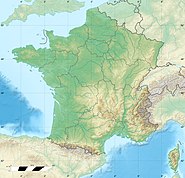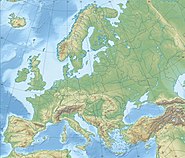
Val-d'Isère, nicknamed Valdi, is a commune of the Tarentaise Valley, in the Savoie department in southeastern France. It lies 5 km (3 mi) from the border with Italy. It is on the border of the Vanoise National Park created in 1963, with good transport links in and out of Lyon, Geneva and Chambéry.

Franz Heinzer is a former alpine ski racer, who specialized in downhill. He was World Cup champion in downhill three consecutive seasons, second only to Franz Klammer. He won a total of 15 World Cup downhill races, fourth behind Klammer (25), Peter Müller (19) and Stephan Eberharter (18). Together with Franz Klammer, Toni Sailer, Jean Claude Killy, Karl Schranz and Stephan Eberharter, he is considered among the best downhill racers of all time. He also won the season title in Super-G in 1991.
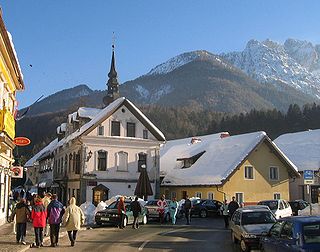
Kranjska Gora Ski Resort is Slovenia's oldest ski resort at Kranjska Gora, Upper Carniola, opened in 1948. It is divided into five different sections under the Vitranc Mountain, streched throughout the whole valley of the same name municipality: Mojstrana, Kranjska Gora, Planica, Podkoren 1, and Podkoren 2. It has a total of 20 km of ski slopes, 40 km tracks for cross-country skiing, and Snow Fun Park.

Ganslernhang is a men's classic slalom World Cup ski course in Kitzbühel, Austria, competing for Hahnenkamm Races since 1937.

The 49th World Cup season began on 25 October 2014, in Sölden, Austria, and concluded on 22 March 2015 at the World Cup finals in Meribel, France. The defending overall champions from the 2014 season - Marcel Hirscher and Anna Fenninger, both of Austria, defended their titles successfully. The season was interrupted by the World Championships in February, in the United States at Vail/Beaver Creek, Colorado. Combined events were not awarded as a discipline trophy.

The International Ski Federation (FIS) Alpine Skiing World Cup is the premier circuit for alpine skiing competition. The inaugural FIS World Cup season launched 56 years ago in January 1967 and this 51st season began on 22 October 2016 in Sölden, Austria, and concluded in the United States at Aspen on 19 March 2017. The biennial World Championships interrupted the tour in early February in Saint Moritz, Switzerland. The season-ending finals in March were held in North America for the first time in two decades: the last finale in the U.S. was in 1997 at Vail.

The International Ski Federation (FIS) Alpine Ski World Cup was the premier circuit for alpine skiing competition. The inaugural season launched in January 1967, and the 2017–18 season marked the 52nd consecutive year for the FIS World Cup.

The International Ski Federation (FIS) Alpine Ski World Cup was the premier circuit for alpine skiing competition. The inaugural season launched in January 1967, and the 2020–21 season marked the 55th consecutive year for the FIS World Cup. As it had every year since 2006, the season began in Sölden, Austria in October, and it ended with the World Cup finals in March, which were held in Lenzerheide, Switzerland. However, the COVID-19 pandemic forced many changes to the original racing schedule. Among them were the following:

Podkoren 3 is a black World Cup technical ski course on Vitranc mountain in Podkoren, Kranjska Gora, Slovenia, opened in 1983. It was constructed by Peter Lakota, a successful Slovenian skier.

Chuenisbärgli is a World Cup technical ski course in Switzerland at Adelboden in Bernese Oberland, opened in 1955.
Gran Risa is a World Cup giant slalom ski course in Italy at Alta Badia. On Piz La Ila mountain in the Dolomites, it hosted its first World Cup event in 1985.

Saslong is a World Cup downhill ski course in Italy just above Val Gardena/Gröden. Located on the Langkofel in the Dolomites, the race course made its World Cup debut in February 1969. The ski course is named after the mountain Saslonch with an adapted spelling.
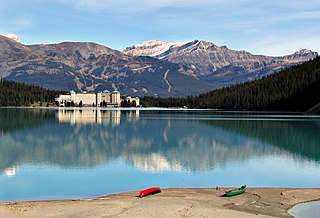
Men's Olympic / East Summit is a World Cup downhill ski course in Canada on the Mount Whitehorn in Lake Louise, Alberta. The race course debuted in 1980.

La face de Bellevarde is a World Cup downhill ski course in France, on Rocher de Bellevarde mountain in Val d'Isere, Savoie; it debuted at the 1992 Winter Olympics with the men's downhill.

Lauberhorn is the longest World Cup downhill ski course in the world on the same name mountain in Wengen, Switzerland, debuted in 1930.

Planai is a World Cup ski course, located on the same name mountain and ski resort in Schladming, Styria, Austria, opened in 1973.

Männlichen is a classic men's World Cup slalom ski course in Wengen, Switzerland. Located in the Bernese Alps on Lauberhorn mountain, the course made its debut in 1930.

Olimpia delle Tofane is the classic women's World Cup downhill ski course in Cortina d'Ampezzo, Italy. It debuted 67 years ago at the 1956 Winter Olympics, hosting the men's downhill.

Kandahar is a classic World Cup downhill ski course in southern Germany. Located in Bavaria at the Garmisch Classic ski area on the Zugspitze above Garmisch-Partenkirchen, it opened 87 years ago in 1936.
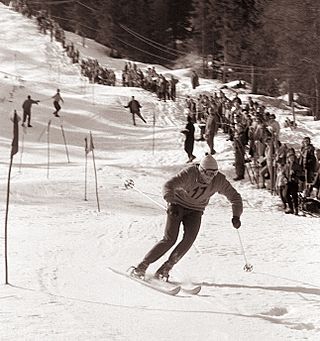
Vitranc Cup is an annual FIS Alpine Ski World Cup competition, held since 1961 in Kranjska Gora, Upper Carniola, Slovenia.


